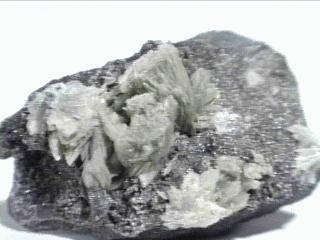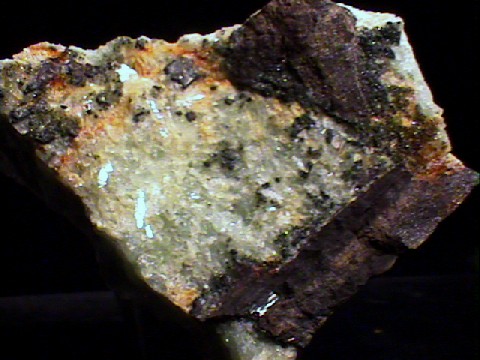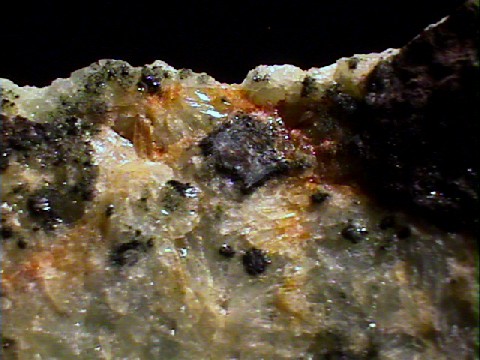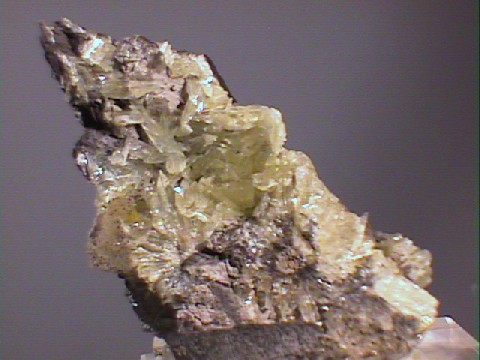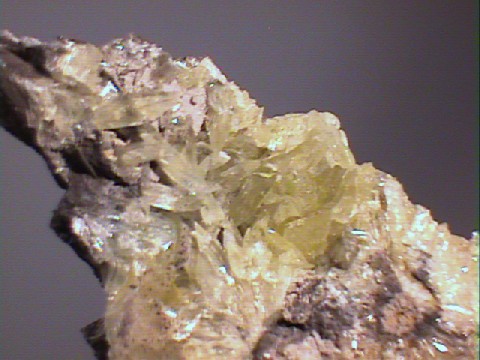 THE MINERAL COLLINSITE
THE MINERAL COLLINSITE
- Chemistry: Ca2(Mg, Fe)(PO4)2 - 2H2O, Hydrated Calcium Magnesium Iron Phosphate.
- Class: Phosphates
- Group: Fairfieldite
- Uses: Mineral specimens.
- Specimens
Collinsite is a relatively rare and not well known phosphate mineral.
It forms in nodules and as crusts in altered
granite pegmatites.
Crystals tend to be prismatic and are often aggregated together into bundles.
PHYSICAL CHARACTERISTICS:
- Color is brown to white or colorless.
- Luster is vitreous.
- Transparency: specimens are translucent to less commonly transparent.
- Crystal System: is triclinic; bar 1
- Crystal Habits include nodules and crusts in altered granite pegmatites.
Crystals tend to be prismatic and are often aggregated together into bundles.
- Cleavage is perfect in one direction.
- Fracture is uneven.
- Hardness is 3.5.
- Specific Gravity is approximately 3.0 (average for translucent minerals)
- Streak is off white.
- Notable Occurrences: Tip Top Mine, Custer Co., South Dakota, USA, Francois Lake, British Columbia, Canada and at other localities.
- Best Field Indicators: color, crystal habit, hardness and localities.
 THE MINERAL COLLINSITE
THE MINERAL COLLINSITE
